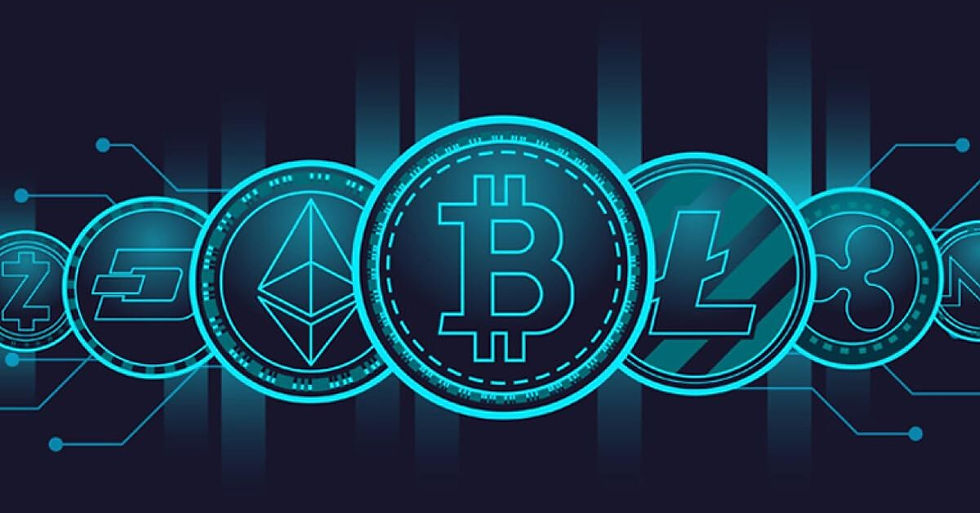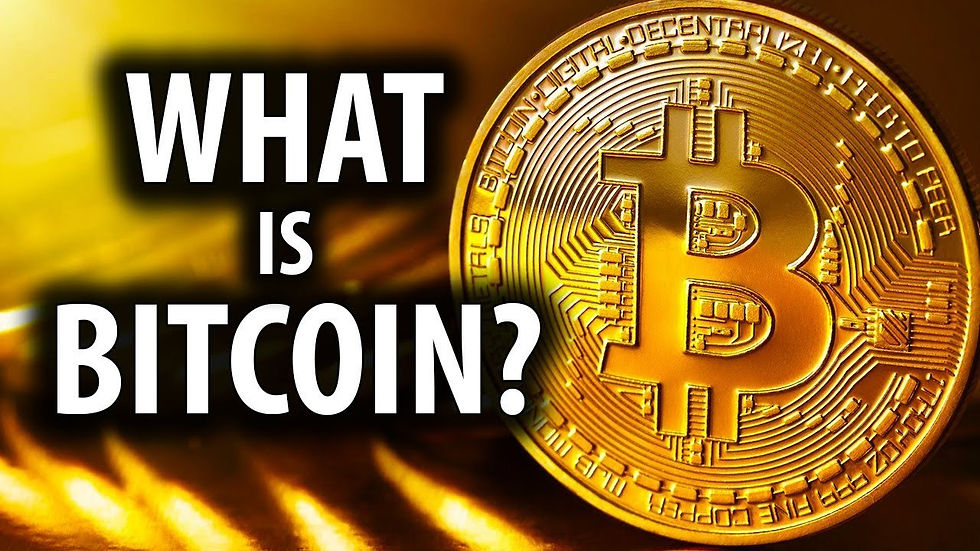Your Ultimate Guide to Understanding Bitcoin and Block-chain Technology: Starting with Basics
- OSMI.EDU

- May 2, 2020
- 3 min read
The Internet, simply put, is amazing and is changing the world, even as we sit down in front of our computers and read this post. Having fundamentally touched all aspects of life for at least half the population across the globe and undoubtedly impacted the other half in some substantial way, the Internet changes how we live, work, learn, play, engage with peers, create new industries such as social media and e-commerce and even how we manage our money - nevertheless, the list goes on.

In 2009, we witnessed the emerging of a new magical form of digital currency – yes you know what it is, the first viable form of digital currency called Bitcoin. And the best part about it? It was born on the Internet and without the hassle of involvement of any governing authority or financial institution, it continuously travels across the Internet. How cool is that?
However, as there are two sides to a coin, with all good opportunities Internet can leverage, there comes struggles, the most significant of them, fundamental issues of trust. Sounds familiar, eh?
To tackle these trust issues, in addition to usernames and passwords, mechanisms for establishing trust and ensuring security such as two factor authentication, firewalls, bio-metrics and CAPTCHAs are implemented - similarly, to enable Bitcoin to be the world's most successful form of digital currency, a new mechanism for establishing trust was required and namely is block chain technology. Blockchain is a novel way to store, validate, authorize and move transactions via Internet. But before diving into block chain concepts, here's all what you need to know about Bitcoin.

Bitcoin Basics: What is Bitcoin and How Can We Use Bitcoin?
1. Bitcoin is a type of peer-to-peer (P2P) electronic cash, first emerged in a paper written by the mysterious author Satoshi Nakamoto, who was later speculated to be definitely not a person but rather a group of people. Sounds swell!
2. Bitcoin traverses from person to person with zero intermediaries and null involvement of governing authorities which is highly unlike the typical currency we know and use.
3. Bitcoin is a type of cryptocurrency - what on earth is cryptocurrency??? Baffled much? Let me break it down for you - when using Bitcoin, the history of a transaction can be seen by everyone, but the contents remain known only to people participating in each individual transaction. Hence, the crypto part derived from the word "encrypted" meaning what you cannot see.
4. Bitcoin has no physical form - it does not use coins or notes but lives natively on the Internet as we speak.
5. What happens in a Bitcoin transaction? When a transaction takes place, participants who use bitcoin validate the transaction and is recorded in a distributed ledger.
6. How does Bitcoin have value as a digital currency? Perhaps the most important question of all!! To answer this, first think along these lines - what does it take to be valued in this world? Oil, diamonds, gold and silver, all are defined as valuable since inception. What do they have in common? Scarcity and being hell expensive to mine!
For something to have value, it should be relatively scarce and accepted by others for payment. There is only a limited number of Bitcoins - just around 21 million! Solves the first bit of the value puzzle!
Now onto the latter bit - how can a person or organization acquire bitcoin – well the answer is not so simple as it seems. It requires a unique type of mining. New bitcoins are awarded as rewards to block chain participants that solve incredibly complex math puzzles every time a block chain transaction takes place. Math oh math! Fear not and don't lose hope just yet!
7. Who does bitcoin mining? This is where miners come to the rescue! People who choose to solve these math problems are called miners – when a puzzle is solved, a miner is rewarded with a bitcoin. Yay!
8. Value of a bitcoin is calculated simply by supply and demand – if demand is high, then value increases. But the downside to it is that math problems keep getting harder and speed of rewarding them gets slower every time!
9. So you have Bitcoins, what now? To spend the received bitcoins, a user should have an electronic wallet on computer – for example, an app on a smartphone; the user can purchase bitcoins from a seller and use the wallet to send and receive payments to other users or organizations.

Michelle Nawalage MEng. (UK), BEng. (UK)
#cryptocurrency #bitcoin #crypto #blockchain #btc #forex #ethereum #money #bitcoinmining #trading #investment #forextrader #business #bitcoinnews #cryptotrading #entrepreneur #investing #cryptonews #bitcoins #invest #trader #binaryoptions #litecoin #cryptocurrencies #bitcoincash #eth #forextrading #bitcointrading #investor #bhfyp #business #businessworld #profit #profitmaking



Hi Xiaoyu!!
Thank you very much for your feedback and becoming a member of OSMI.EDU. Michelle who contributed 100% on this article has commented above. Fire her a question if you have any. She will definitely assist you.
Hi Li! Thank you for getting in touch with us. If you would like to follow more new and exciting content, please don't forget to subscribe to our blog.
It's funny and educational! It's friendly for someone who has even zero basis. Thanks for your sharing, I finally know what Bit-Coin is!